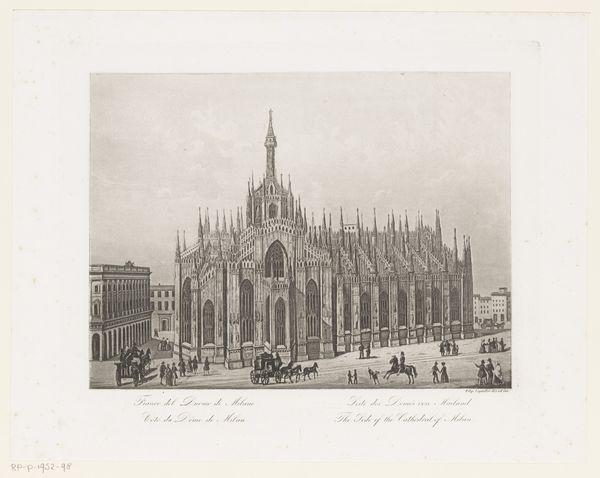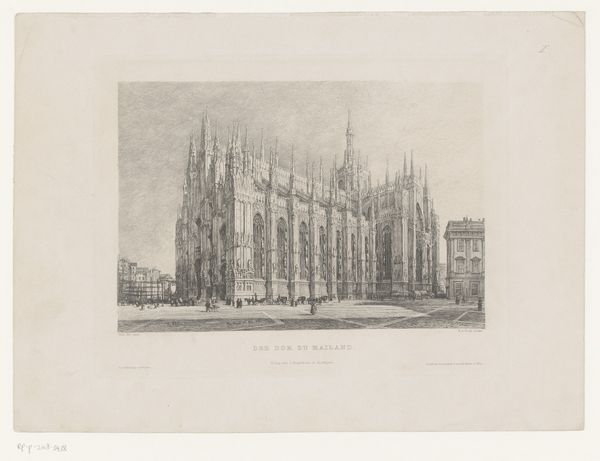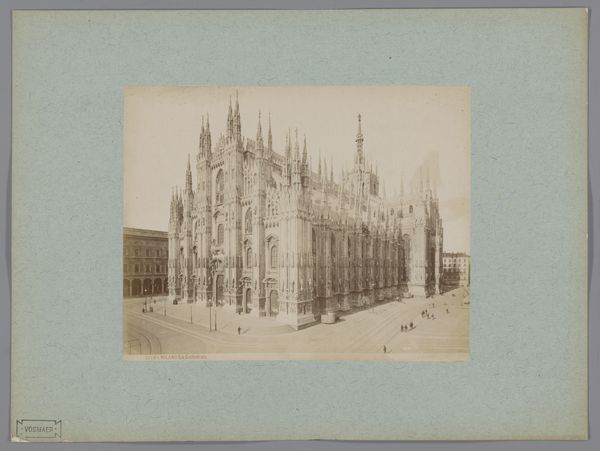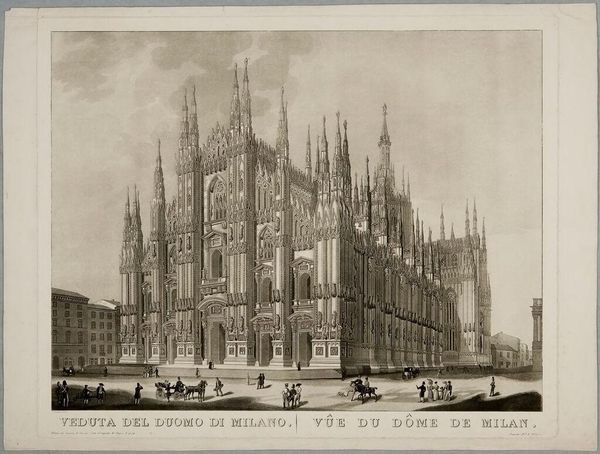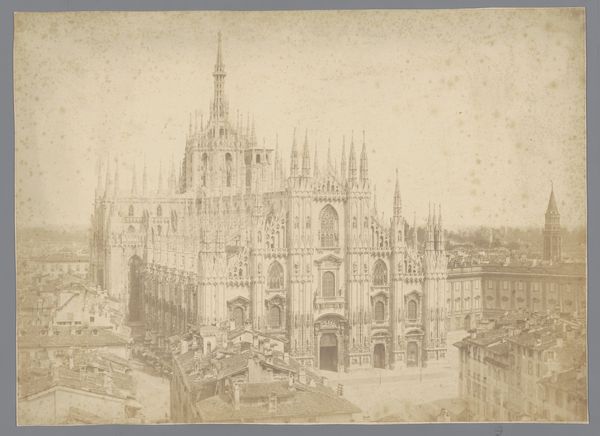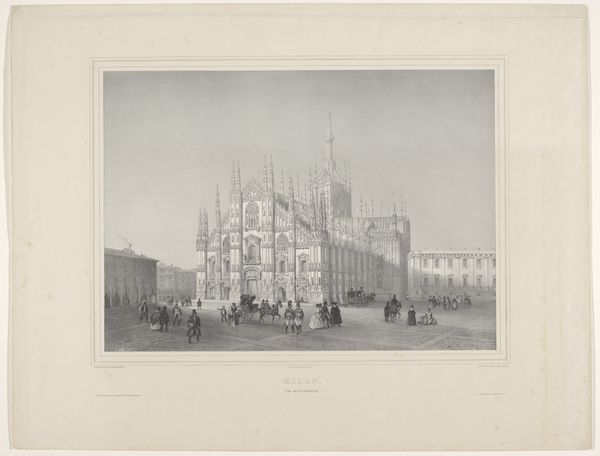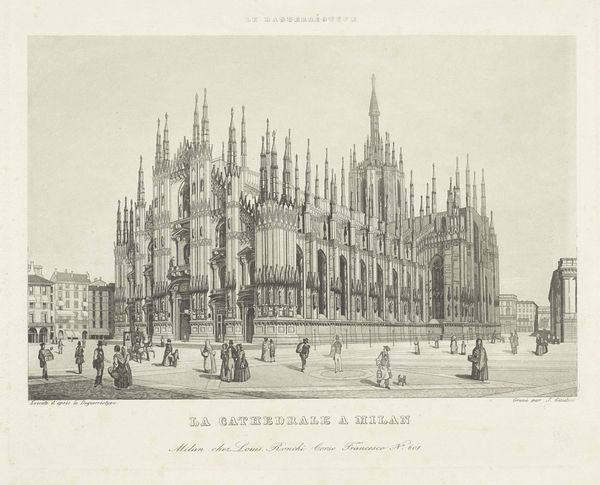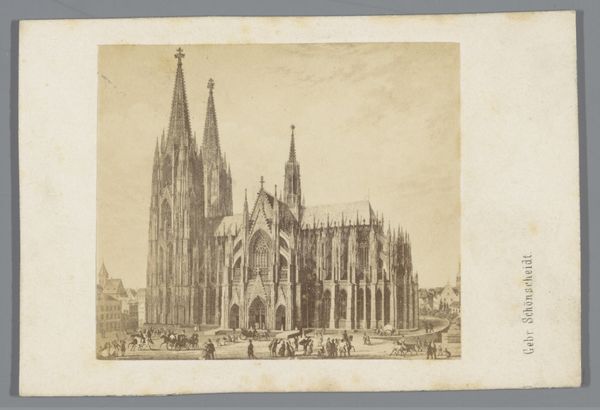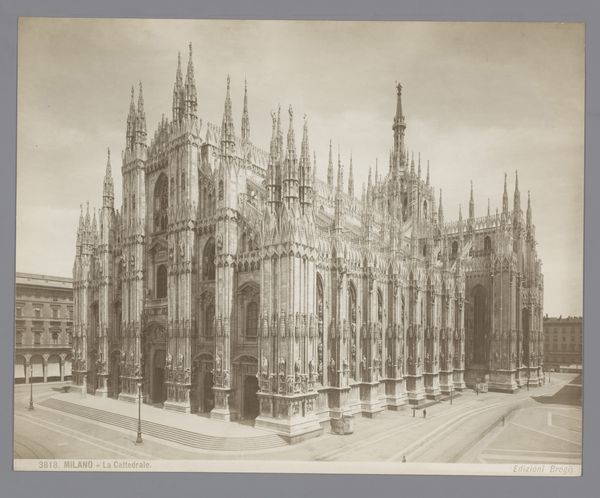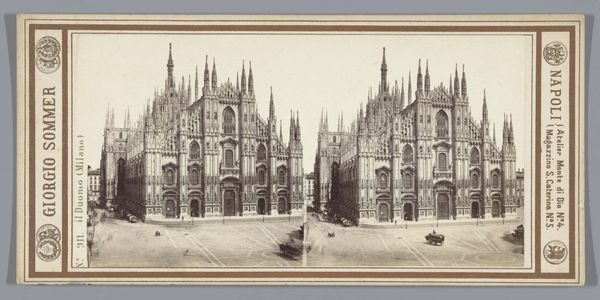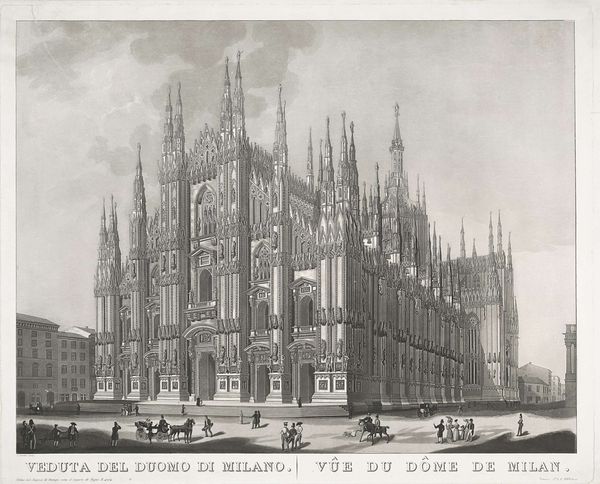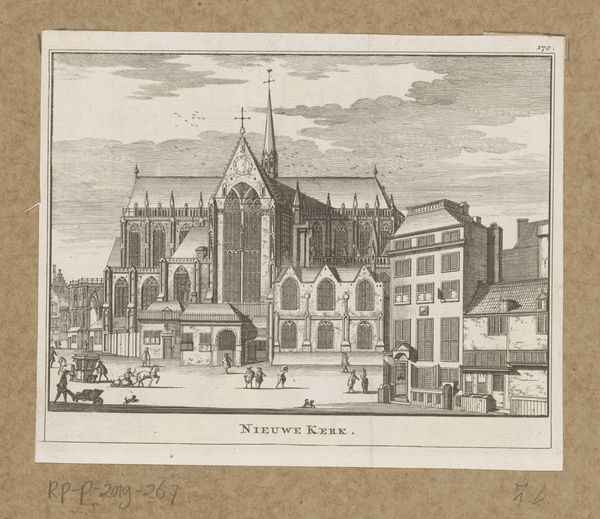
print, engraving, architecture
#
neoclacissism
# print
#
old engraving style
#
landscape
#
cityscape
#
engraving
#
architecture
#
realism
Dimensions: height 204 mm, width 244 mm
Copyright: Rijks Museum: Open Domain
Editor: This is “Façade van de Dom van Milaan” by Filippo Naymiller, created after 1814. It's an engraving. I'm really struck by how this print captures the almost unbelievable complexity of the Milan Cathedral’s facade, making it look imposing and monumental. What can you tell me about this image? Curator: Well, given the socio-political climate of the time, and the long, complicated construction history of the Duomo, this print plays an important role in shaping the public’s understanding. Post-Napoleonic era, Milan was transitioning. The Duomo, as a symbol, becomes wrapped up in defining civic pride and identity. Do you notice how pristine the scene is presented? Editor: Yes, it looks idealized, almost like a stage set. Not really gritty like a working city. Curator: Exactly. This polished portrayal serves a purpose. It's a carefully crafted image of civic order and architectural grandeur, reaffirming values. The Duomo, plagued by funding issues and design disputes for centuries, finally becomes a source of visual unity and stability. The choice of printmaking, with its accessibility, allowed this image to circulate widely, further cementing the Duomo's symbolic weight. Editor: So, the print is not just a picture, but part of a larger cultural narrative. Curator: Precisely. Consider also the audience: tourists who could buy the print, or local citizens taking pride in their heritage. Visual imagery like this becomes a powerful tool in solidifying a sense of place and shared history. What do you make of the people depicted in the engraving? Editor: Now that you mention it, they appear almost like afterthoughts. Maybe their presence serves more to emphasize the enormous scale of the Duomo. Curator: Exactly, and the style of dress gives clues about the target audience too. The image reinforces an impression of prestige to create desire for visitors. Editor: I had not considered that before. It is fascinating to see the politics of imagery embedded in the details. Curator: Indeed, by examining how institutions and social forces intertwine, we get a much deeper understanding of its appeal and the artist's aims. Editor: I will certainly keep this in mind when observing the artwork in the future. Thanks.
Comments
No comments
Be the first to comment and join the conversation on the ultimate creative platform.
